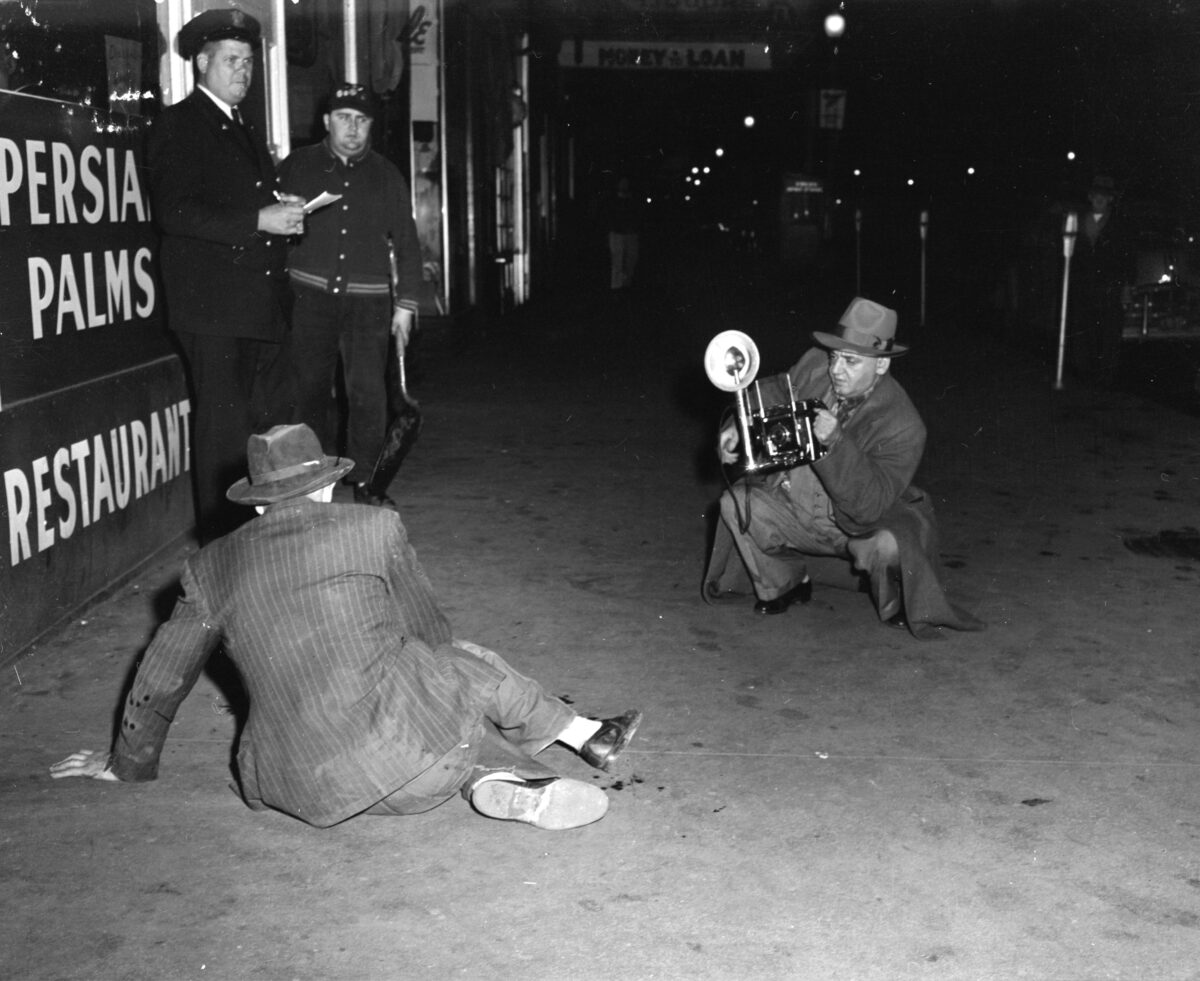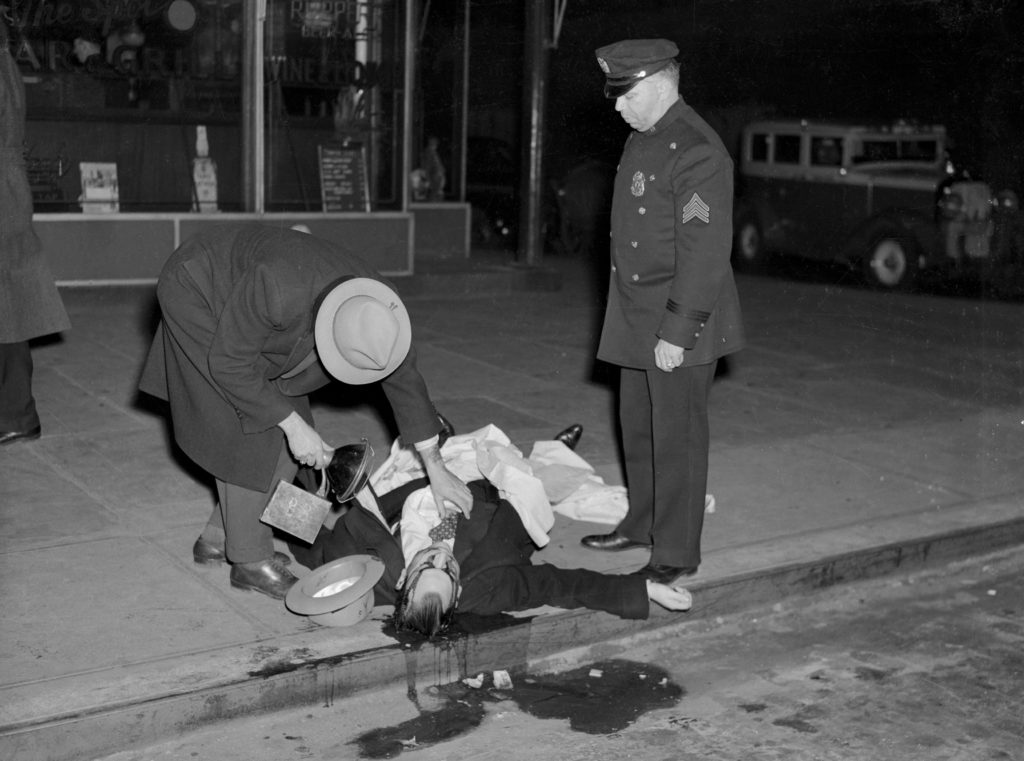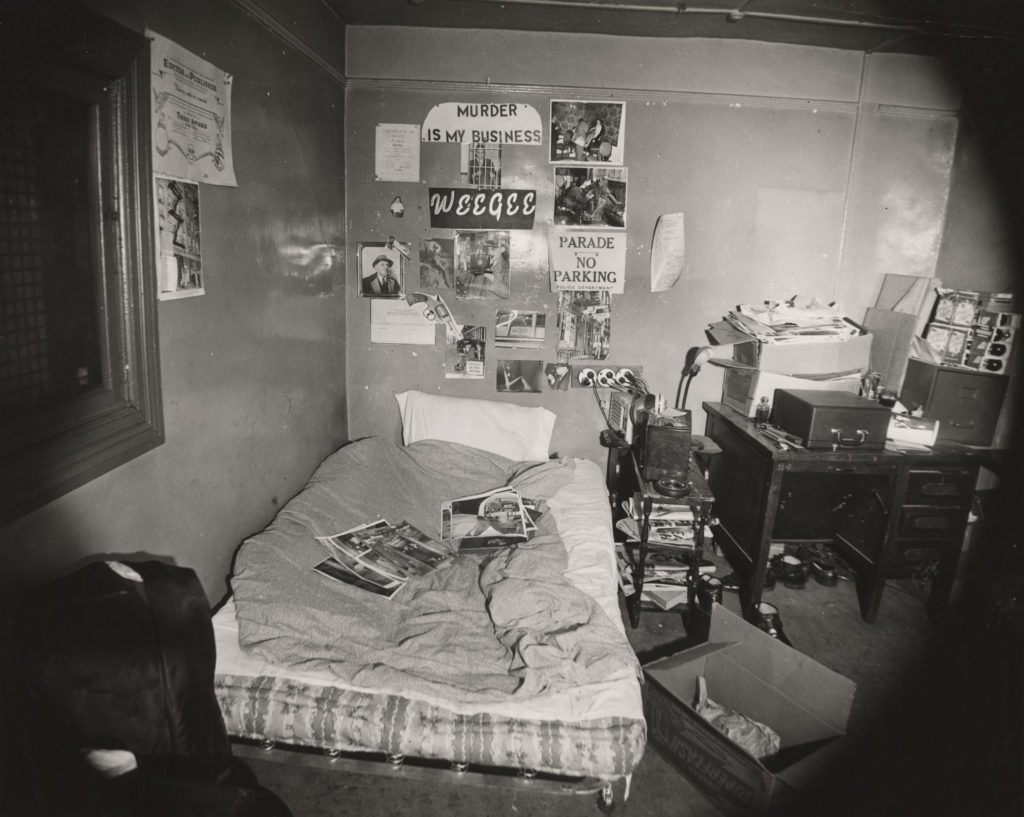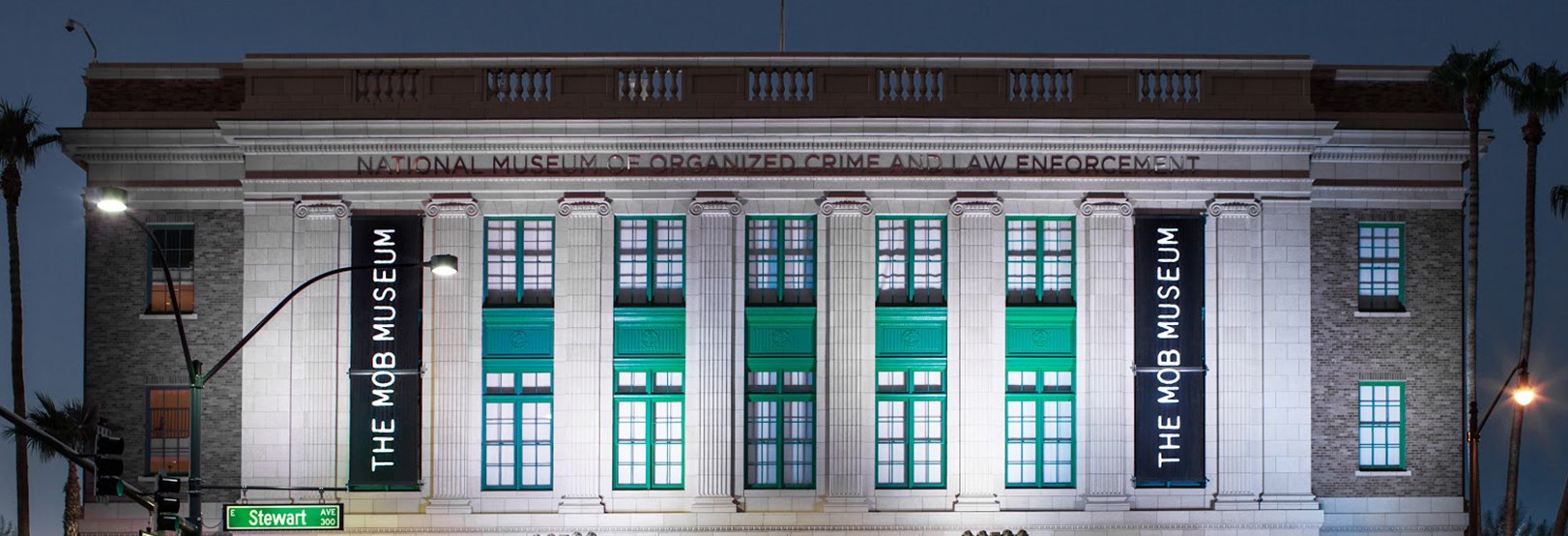
‘At home on the streets, and always on the job’
Weegee’s tabloid images of New York murder scenes defined a gory era

A freelance newspaper photographer named Arthur Fellig, a squat, rumpled, cigar-chomping immigrant who liked being called Weegee, will forever be known for his stark nighttime images of crime and early Mob violence in New York City.
“Weegee captured night in New York back when it was lonely and desolate and scary,” Tim McLoughlin told the New York Times in a 2008 article titled “Crime Was Weegee’s Oyster.” McLoughlin is editor of the Brooklyn Noir anthology series.
Weegee’s nighthawking exploits and unusual life are detailed in a compelling new book, Flash: The Making of Weegee the Famous, by Christopher Bonanos, city editor at New York magazine. Published this summer, the book, billed on Amazon as “the first comprehensive biography of Weegee,” includes many of the photographer’s most important pictures.
Born in what is now Ukraine, Fellig emigrated to the United States with his family in 1909 at age ten and later worked in newspaper darkrooms before chasing down spot-news pictures for the crime-saturated tabloids around town.
While crime wasn’t Weegee’s only subject, his atmospheric, gory New York nighttime pictures from the 1930s and ’40s linger in the public consciousness. A 2016 Life publication, Film Noir: 75 Years of the Greatest Crime Films, credits tabloid newspapers in general and Weegee’s work specifically as among the factors that influenced that genre of movie-making.
“No photographer was more identified with tabloid journalism than Arthur Fellig, a.k.a. Weegee,” the publication states.
From the mid-1930s until 1947, Weegee operated out of a small living space in a tenement above the John Jovino police supply store at 5 Centre Market Place, a block-long street in Lower Manhattan across from what was then the main police headquarters.
Next door, at 4 Centre Market Place, was the Headquarters Press Building, known as “the shack,” where reporters and photographers worked from 1940 until 1973, after which the police department set up its headquarters elsewhere.

A few doors down from the shack was the Headquarters Tavern, now a restaurant named Onieal’s Grand Street, serving penne alla vodka and kale-and-grilled-corn zoodle. At the time, it was a rowdy saloon with an oak bar and carved-wood ceiling where reporters and tough cops guzzled beer together and swapped stories. Supposedly, a tunnel connected the police building to the tavern.
In the annals of journalism, the shack, where colored lights on the building facade notified reporters of incoming calls from their editors, achieved legendary status from the days not only of Weegee and his contemporaries but as the work space of later famous reporters such as Nicholas Pileggi. Now an author and screenwriter, Pileggi achieved wide recognition for his nonfiction Mob books Casino and Wiseguy, which became the basis for the blockbuster movies Casino and Goodfellas.
These buildings on Centre Market Place are still standing with the same addresses but have been extensively remodeled inside and out. The Police Headquarters building later was converted into luxury residences.
When Weegee lived on Centre Market Place, he was strategically positioned to rush out around the clock, carrying his boxy Speed Graphic camera with a flash attached to it, for photographs of criminals unloaded from paddy wagons or to a breaking story somewhere else.
“Here was the nerve center of the city I knew,” he wrote.
In a brief video, Bonanos, the author of Flash, retraces Weegee’s steps from Centre Market Place to a site three blocks away at 90 Elizabeth Street, where, on August 6, 1936, a low-level hood named Dominick Didato lay dead in a pool of blood outside what was then the Sciacca Restaurant in Little Italy. The video, “Remaking a Murder: How Weegee Shot a Mob Killing,” is on New York magazine’s YouTube channel, Vulture.
“He had crossed somebody in Lucky Luciano’s organization,” Bonanos says of the slain gangster, “and you know what happened to him: He ended up dead on his way out after dinner.”
In the video, Bonanos notes that Weegee arrived at the scene “around the same time the cops did,” having probably heard about the shooting from police sources at the headquarters across from his building.
Such quick action was not unusual for Weegee. Moving faster than other press photographers, he frequently hustled out across town, often at night and sometimes in his 1938 Chevy with a work station in the trunk, to photograph shootings, fires, car crashes and other calamities to sell to the tabloids. He later worked as a staff photographer for the now-defunct New York daily PM.
“Weegee was at home on the streets, and always on the job,” wrote Philomena Mariani and Christopher George in The Weegee Guide to New York, a photographic compilation with fold-out maps showing the exact spots Weegee was standing when making some of his most iconic pictures.
Weegee’s news instincts and competitive drive gave him a definite edge, but he had other advantages, too. For instance, Weegee was the first civilian in the country with a camera to have a police radio permit, costing $25 a year and allowing him to hear about breaking news before others in the business.
His nickname, Weegee, or “Weegee the Famous,” as he later called himself, supposedly is a phonetic version of his Ouija-like clairvoyance in arriving before others at big events. Weegee was “almost always the first photographer on the scene,” wrote John Strausbaugh in the New York Times.
Another version of the nickname has it that “Weegee” is a shortened take on his one-time role as a squeegee boy responsible in the Times darkrooms for drying photos. Eventually, “Squeegee” was condensed to “Weegee.”
“Like practically everything he ever owned,” a friend said, “the name got worn down.”

Weegee had sources on both side of the law, handing out cigars and other items to curry favor. He kept a supply of stogies in his trunk. “I was friend and confidant to them all,” he wrote. “The bookies, madams, gamblers, call girls, pimps, con men, burglars and jewel fencers.”
An example of how he cultivated sources occurred in the early ’30s, when he encountered a nervous Dutch Schultz at a police station on East 104th Street and gave the notorious gangster two aspirins and a smoke. “From then on,” Weegee said, “we were friends.”
Because of his gangland photography, Weegee’s colleagues dubbed him “the official photographer for Murder Incorporated,” the Mafia’s hit squad.
As the New York Times notes, the gangsters he photographed behind bars included Dutch Schultz, Jack “Legs” Diamond and Vincent “Mad Dog” Coll. Other mobsters were dead on the pavement in a pool of blood.
Over time, after publishing books of photography and having his work displayed in museums, his fame grew, and he turned away from street photography. Weegee briefly moved to Hollywood (“the Land of the Zombies,” as he called it) in an apparently loveless marriage, had bit parts in a movie or two, experimented with photography by distorting the images, bounced around Europe, and shot nude pictures.
Weegee even made his way to Las Vegas, filming a promotional piece for Wilbur Clark’s Desert Inn, having reconnected with an old friend serving as the hotel-casino’s press representative. While there, Weegee received a key to the city, declaring Las Vegas to be a “fantastic” place. “Everything is open 24 hours a day,” he wrote.
Decades later, he was remembered in movies such as 1992’s The Public Eye, starring Joe Pesci as a Weegee-esque tabloid photographer who rearranges crime scenes for a better shot, as Weegee was thought to have done sometimes, and the 2014 crime drama Nightcrawler, with Jake Gyllenhaal as an oddball freelancer chasing down breaking news (and rearranging scenes), carrying a video camera in Los Angeles, not a Speed Graphic in New York City.
These movies are probably more how Weegee would have wanted to be remembered instead of as the globe-trotting caricature he arguably had become late in life.
In the mid-’60s, a few years before his death in 1968 at age 69, Weegee attempted to recapture the earlier rush of news photography, going out at night with a friend from the New York Post, but the work was too strenuous. His nightcrawling glory years were over.
Soon he was dead from a brain tumor.
In the 1990s, staff members at the International Center of Photography in New York City, which houses 500 boxes of his work, noticed a small cardboard container with “Weegee” written on the lid. Opening it, they saw his ashes inside. Because some at the center felt uneasy about this, his ashes, thirty years after his death, were scattered at sea in 1998.
Writing of this event in Flash, Bonanos notes, “No pictures were taken.”
Larry Henry is a veteran print and broadcast journalist. He served as press secretary for Nevada Governor Bob Miller, and was political editor at the Las Vegas Sun and managing editor at KFSM-TV, the CBS affiliate in Northwest Arkansas. Henry taught journalism at Haas Hall Academy in Bentonville, Arkansas, and now is the headmaster at the school’s campus in Rogers, Arkansas. The Mob in Pop Culture blog appears monthly.
Feedback or questions? Email blog@themobmuseum.org





